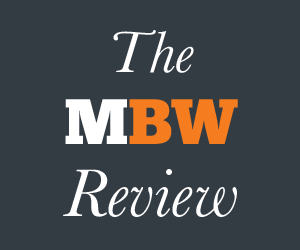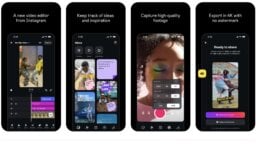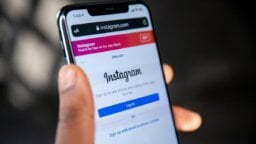
The MBW Review offers our take on some of the music biz’s biggest recent goings-on. This time, Cherie Hu delves into the latest feature additions to Facebook-owned Instagram, and how the entertainment industry can make the most of them. The MBW Review is supported by Instrumental.
As a multibillion-dollar social media platform, Instagram wields unprecedented influence not just on how humans connect with each other, but also on how musicians and other creative entrepreneurs build relationships with fans, peers and potential business partners.
Many artists now package their Instagram profiles as de facto electronic press kits (EPKs) to show off to prospective agents, festival bookers, labels, managers and brand sponsors, instead of emailing static PDF documents. Across industries, entrepreneurs have called Instagram the new business card, the new resume, the new contact list and the new blog (or at least a killer of the old one).
And now, the Facebook-owned app may very well be the new storefront.

In March 2019, Instagram introduced a native checkout funnel that allowed users to purchase products featured in photos from select brands without leaving the app.
According to the company, 130 million of its users already interact with product tags in posts every month, making native checkout a shrewd move to reduce purchasing friction for this already-existing demand. Even in a crowded e-commerce market, there are also potentially gargantuan returns awaiting – namely $10 billion in annual incremental revenue by 2021, according to Deutsche Bank.
While the checkout feature is available only to U.S. consumers for now, over twenty influential brands from across the price spectrum –including mass-market mainstays like Uniqlo and H&M, high-end names like Prada and Oscar de la Renta and more boutique, direct-to-consumer brands like Outdoor Voices and Warby Parker – are already on board as beta testers.
In April, Instagram also revealed a select number of around 50 “Creators,” spanning models (Gigi Hadid), athletes (Candace Parker), celebrities (Kim Kardashian West), CEOs (Warby Parker’s Dave Gilboa) and media publishers (HypeBeast), who will help test the feature in their own photos in exchange for better analytics.
Curiously, no musicians were included in this initial beta rollout – which I think is a significant missed opportunity for both Instagram and the music business.

Artists and labels have been jumping all over merch as a powerful marketing tool and revenue stream ever since– from heavily-discounted album bundles for inflating sales (e.g. Travis Scott’s Astroworld), to limited-edition merch campaigns with streaming services (e.g. Billie Eilish’s partnership with Apple Music), to a seemingly endless cycle of high-end pop-up shops in New York and Los Angeles (e.g. Kanye West’s Pablo shop).
Instagram is capturing virtually none of that transaction value, even though its power users are also power music consumers: A recent Nielsen study found that the average Instagram music fan spends $269 a year on music-related activities, versus $152 for the general population.
“Instagram’s new e-commerce features – along with its licensing deals with major labels and publishers, and its popularity as a live concert documentation platform – provide a blueprint for how to build an integrated music hub that monetizes fandom.”
The social app also has an inherent advantage over paid streaming subscription services like Spotify, Apple Music and Amazon Music when it comes to empowering artists to become their own media properties, independent of any given song or album cycle.
Incumbent streaming services reward consumption: Artists earn money every time their music is streamed, regardless of whether those listens come from actual fans. At its worst, this model encourages artists to maximize streams without further scrutiny of engagement or consumer loyalty.
In contrast, Instagram’s new e-commerce features – along with its licensing deals with major labels and publishers, and its popularity as a live concert documentation platform – provide a blueprint for how to build an integrated music hub that monetizes fandom, not just consumption, while closing the ongoing, stubborn data silos between physical and digital music economies.
Over the last decade, streaming services have ushered in both the commercial resurgence and the material overcrowding of recorded music. Not only did streaming account for almost half of global recorded-music revenue in 2018, but the long tail of creation is also getting ever longer, with several hundreds of thousands of new songs now being uploaded to streaming services on a weekly basis.
Save titles and tiny album thumbnails, all of these tracks are visually indistinguishable in a leanback streaming environment; this inherently stacks the odds against the artists’ favor when it comes to grabbing listeners’ attention, given that visual recall far outperforms auditory recall.
To develop a more sustained following around their music, therefore, artists face an enormous amount of pressure not just to be heard, but also to be seen. In the words of Mat Dryhurst, “the music industry is now the visibility industry” – and in today’s tech-dominated landscape, winning out in a “visibility industry” arguably requires gaming the algorithms on the platforms that makes one the most visible.
With over one billion users as of June 2018, Instagram has naturally become a top contender for artists seeking to develop and scale their visual brands.
From Tierra Whack releasing fifteen minute-long videos to accompany her critically-acclaimed debut album Whack World, to Jaden Smith dropping his EP Syre: The Electric Album exclusively on IGTV, to countless artists sharing behind-the-scenes videos from recording sessions and tours on the app, Instagram’s potency and versatility in music marketing runs the entire gamut from shortform to longform, lo-fi to premium, personal to commercial.
Actual monetization is an entirely different story. Across all social media platforms, one of the biggest challenges for artists and music marketers is not just getting compensated for user-generated music content, but also navigating the cryptic landscape of attribution modeling – i.e. intelligibly mapping the dollar-for-dollar, click-for-click impact of marketing and advertising on sales.
Facebook has gradually been trying to help mitigate this problem with its own rights-management and content-ID system for the music industry. Over the last few years, the company struck licensing deals with nearly all major labels, publishers, independent aggregators and royalty collection societies, laying the groundwork for turning user-generated content on the world’s largest social network into a legitimate revenue stream, rather than a tedious legal cost.
“While YouTube still accounts for the majority of the estimated $1.2 billion that user-generated content contributes to the music business, industry insiders predict that Facebook’s contribution to that pie could grow fourfold over the next decade”
While YouTube still accounts for the majority of the estimated $1.2 billion that user-generated content contributes to the music business, industry insiders predict that Facebook’s contribution to that pie could grow fourfold over the next decade.
Although Facebook’s deals are blanket licenses that do not enable “per-stream” royalty payouts, they do allow users to begin sharing and exchanging music legally across the tech behemoth’s media properties.
On Instagram, this can take the form of Music Stickers in Stories, as well as question stickers that incorporate music recommendations from followers. In the past, Instagram’s music partnerships team has also encouraged artists to direct followers to their own merch stores by placing hyperlinks in their Stories.

Some of the root challenges are endemic not to Instagram or Facebook, but rather to the music industry as a whole. In fact, several mass-market streaming services have attempted to build better merchandise tools for artists on their platforms—but their inherently utilitarian, non-social interfaces have led to lackluster results to date.
In August 2014, now-defunct startup BandPage landed an integration with Spotify that seemed almost too good to be true: Any independent artist could use their BandPage account to set up their own offers for merch and other direct-to-fan experiences on Spotify for free, without having to pay any fees or commissions to the streaming service.
“Spotify’s attempts at merch seem to be focused on promoting the Spotify brand… rather than building more open tools for the wider artist community.”
The fantasy quickly concluded, however, when YouTube acquired BandPage for the reported firesale price of $8 million in 2016, then closed the platform for good in 2018 (the URL bandpage.com now redirects to YouTube for Artists).
That same year, Spotify managed to strike a replacement partnership with Merchbar that is still active today, but there remains a lot of friction and inaccuracies in the user experience. (For instance, finding available merch and vinyl on Spotify for one of my favorite rappers, Saba, required five total clicks and a long scroll to a tiny section at the bottom of Saba’s artist profile, only to find that two of the three merch items listed were for another artist with the same name.)
All of the company’s other attempts at merch seem to be focused on promoting the Spotify brand – e.g. selling T-shirts for editorial playlists like RapCaviar and mint, or hosting a merch pop-up in NYC’s SoHo neighborhood for their “Black History Is Happening Now” program – rather than building more open tools for the wider artist community.
The only other streaming platform with a self-serve merch integration is YouTube, which has partnered with Teespring on its Merch Shelf feature since June 2018.
While there are similarly few success stories from the partnership, there is actually a significant financial incentive for independent artists, at least in the U.S.: up until June 2019, all U.S.-based channel owners will be rewarded with an additional referral bonus of $1 per item sold on their merch shelf.
Other companies that seem hypothetically well-positioned to launch a merch feature, such as fan-friendly SoundCloud, have remained strikingly silent on the issue for years. Bandcamp does make nearly half of its revenues from merch, but is designed neither as a social-networking tool nor as a subscription streaming service.
With its native e-commerce capabilities and licensing deals, Instagram might be able to fill this gap, becoming the closest thing to a self-serve web shop for artists that weaves together data from streaming, social media and retail purchases.
Social-media and streaming services are not the only companies responsible for moving music e-commerce forward; the music industry itself needs to change, too.
When it comes to the relative lack of attention to music merch and e-commerce, record labels may be culprits as much as they are partners. Yes, every major label touts a wide range of internal e-commerce resources—including Universal Music Group’s Bravado and Fame House, Sony Music’s The Thread Shop and Warner Music’s EMP Merchandising and dedicated Artist Services division.
“Because labels dominate so much of the public conversation about the music business, they end up perpetuating the assumption that recordings are the core, even the only, products that matter to artists’ career growth and bottom lines.”
But by nature of being labels, these companies arguably still prioritize short-term release cycles that maximize streams, rather than building out long-term assets and brand equity for artists on their rosters (with the exception of more legacy catalogs). And because labels dominate so much of the public conversation about the music business, they end up perpetuating the assumption that recordings are the core, even the only, products that matter to artists’ career growth and bottom lines.
In reality, building a diversified business with equal attention to recordings, merchandise and other forms of direct-to-fan marketing and e-commerce will likely become the norm in the future of the music industry, rather than the exception.
One potential outlier case study is Brud, the $125 million startup behind a growing slate of Instagram-native “CGI influencers,” including Lil Miquela , Blawko and Bermuda.
Miquela in particular is not only a popular Instagram influencer, but also a musician with decent streaming success, in that order. [For those not up to speed: Lil Miquela – the main image on this article – is not human. She is a digital avatar, analogous to those you might see in a Pixar movie.]
“Lil Miquela’s 2018 single, Hate Me, has garnered nearly four million streams to date.”
She had already amassed well over one million followers on the app simply by existing – and nailed brand partnerships with the likes of Prada, Vogue and Outdoor Voices – before releasing her 2018 single “Hate Me,” which has garnered nearly four million streams to date. (Her monthly Spotify listener count hovers between around 200,000 and 300,000.)
In April 2019, Miquela then launched her own merch brand Club 404, which has amassed over 9,000 followers on Instagram to date and will shortly be launching its own zine.
In other words, Brud now runs an organization that is equal parts record label, fashion influencer business and wholly-owned merchandise shop all in one – a flexibility that is perhaps easier to manage for a suite of avatars rather than of “real” human personalities.

Many artists across genres are now taking similar approaches to extending their brands, building platforms for supporting multimedia artists with staying power beyond one-off release cycles. ODESZA’s Foreign Family Collective and Ta-ku’s 823 support both aural and visual artists, while brands such as Rihanna’s Fenty Beauty and the late Nipsey Hussle’s Marathon Clothing now have lives of their own beyond their celebrity founders’ reach.
The vast majority of these merch companies, however, have not yet taken proper advantage of Instagram’s e-commerce capabilities. For instance, while Fenty Beauty and 823 are both labeled as retail brands and regularly posts “shoppable” photos with product tags on its Instagram profile, none of Bravado, The Thread Shop or Marathon Clothing maintain a separate shopping tab or regularly tag their products in their respective photos, putting extra friction into the purchase conversion funnel for potential customers.
Closing this gap will require effort from both sides: artists and labels’ merch arms proactively setting up their Instagram profiles as proper mobile shops, and Instagram opening up native marketplace and checkout opportunities to a wider range of music brands.
At large, Instagram will likely face an uphill battle trying to compete against e-commerce giant Amazon, which is projected to take up nearly half of U.S. online retail sales this year.
Yet Amazon has arguably cornered only one specific kind of shopping experience – what Recode editor Jason Del Rey once described as “utility shopping,” which “quickly gives you exactly what you want when you go to the site knowing exactly what you want.”
In contrast, Instagram can quickly become a mobile-first market leader where Amazon falls short – namely in the realm of discovery shopping, the “serendipitous impulse buying” that is “common in physical retail where you might uncover something you didn’t need but now covet,” wrote Del Rey.
“That type of shopping is one that many Americans still consider a form of entertainment.”
In fact, beyond Instagram and record labels, major media and tech companies are working to turn seemingly every online entertainment format into a potential transaction opportunity, for better or for worse.
Snapchat is reportedly developing a native integration with Shopify, which will likely compete with Instagram’s e-commerce offerings; NBCUniversal recently announced ShoppableTV, a feature that will display scannable QR codes for “shoppable moments” during TV shows on NBC, Telemundo, USA Network, Bravo, E! and other networks; mobile app Down to Shop is attempting to revamp the Home Shopping Network experience for millennial and Gen-Z consumers, relying heavily on vertical video.
While the music industry has a lot to gain from this rising trend of “shoppable media,” not all outcomes may be positive. Advertising and customer-acquisition costs continue to rise for nearly all small businesses on Instagram, potentially becoming cost-prohibitive for smaller artists.
“Instagram is arguably better positioned than most other other music-tech companies to facilitate multiple types of music fandom.”
The public is also becoming increasingly sensitive to the over-commercialization of fandom– see the debates around Taylor Swift’s Verified Fan campaign, hundred-dollar meet-and-greet packages and micro-monetizations of producer promotions on Instagram Stories – and trust in artist channels and other media properties might decline the more they warp into real estate for advertisers.
For Instagram, opening up native e-commerce features may also lead to a surge in counterfeit sales for branded merch. Labels already spend a significant amount of time issuing takedown requests to infringing items on more open marketplaces like Amazon, Etsy and RedBubble, and Instagram may be in danger of becoming just another pain point on this laundry list.
Nonetheless, Instagram is arguably better positioned than most other other music-tech companies to facilitate multiple types of music fandom – and capture the value of those diversified income sources – on a single platform, smoothing out marketing and attribution workflows for artists and their teams in the process.
If and when Instagram rolls out its e-commerce features to artists, the music industry can move one step closer to truly putting its money where its mouth is when it comes to espousing the power of “direct-to-fan,” and meeting those fans where they already are, in all of their forms.






